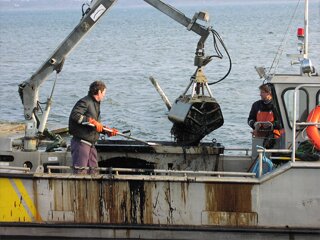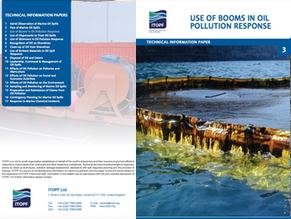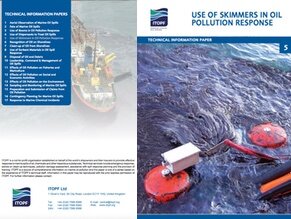Containment & Recovery
Containing floating oil within booms for recovery by specialised skimmers is often seen as the ideal solution to a spill at sea as this aims to physically remove oil from the marine environment. As a result, it is the primary at-sea response strategy adopted by many governments around the world.
For containment and recovery of oil to be successful, there are some key challenges that must be overcome. The drifting floating oil must be located and the equipment deployed in an effective arrangement. The sea state and weather conditions must be sufficiently calm to permit the selected equipment to function well and for the response personnel to safely operate the equipment. The oil must also be in a state that is amenable for recovering using the available skimmers. These interrelated challenges commonly combine to limit the proportion of spilled oil that can be recovered to 10-15%. However, where the environment conditions and response factors allow, containment and recovery can be an important strategy.
There is a long list of equipment and logistical support required to undertake an at sea containment and recovery operation. However, the two primary pieces of equipment required are a boom, to contain and concentrate the oil, and a skimmer, to recover the oil from the sea surface and pump it into a suitable storage container.
Booms
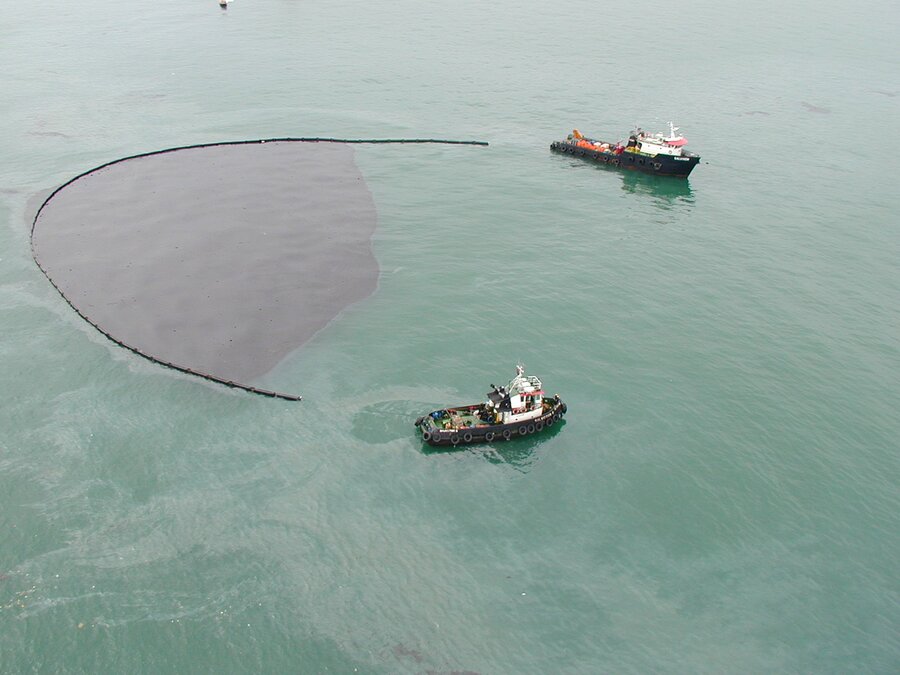
Booms function to limit the spread of oil and concentrate it for recovery. There are many designs of booms ranging from small, lightweight models suitable for small spills in very sheltered waters that can be deployed manually, through to large, robust open sea booms which typically require sizeable vessels, cranes and ancillary to handle them.
The most important characteristic of a boom is its capacity to contain or deflect oil and this is largely determined by the boom's behaviour in relation to water movement and sea conditions. It should be flexible enough to conform to wave motion yet sufficiently rigid to provide a barrier so as to retain as much oil as possible. Standard booms are typically not capable of retaining oil against a relative water current of more than 0.7 knots at right angles to the boom, irrespective of boom size or construction. A recent development has been boom arrangements specifically constructed to work in moving water or towed behind a vessel and where available, can prove effective in areas with relatively strong water currents.
Read more
Other important boom characteristics are strength, ease and speed of deployment, reliability, weight and cost. It is essential that a boom is sufficiently robust for its intended purpose and will tolerate inexpert handling, since trained personnel are not always available. Strength is also required to withstand the forces of water and wave action when being towed into position. A boom should be as straightforward as possible to deploy so as to ensure the safety of response personnel and allow for rapid deployment and recovery from the often confined and difficult working environment of a response vessel. Practical limitations of boom strength and ease of handling mean that, in general, a single boom arrangement will be limited to a maximum of 300-400m and commonly much shorter than this.
Skimmers
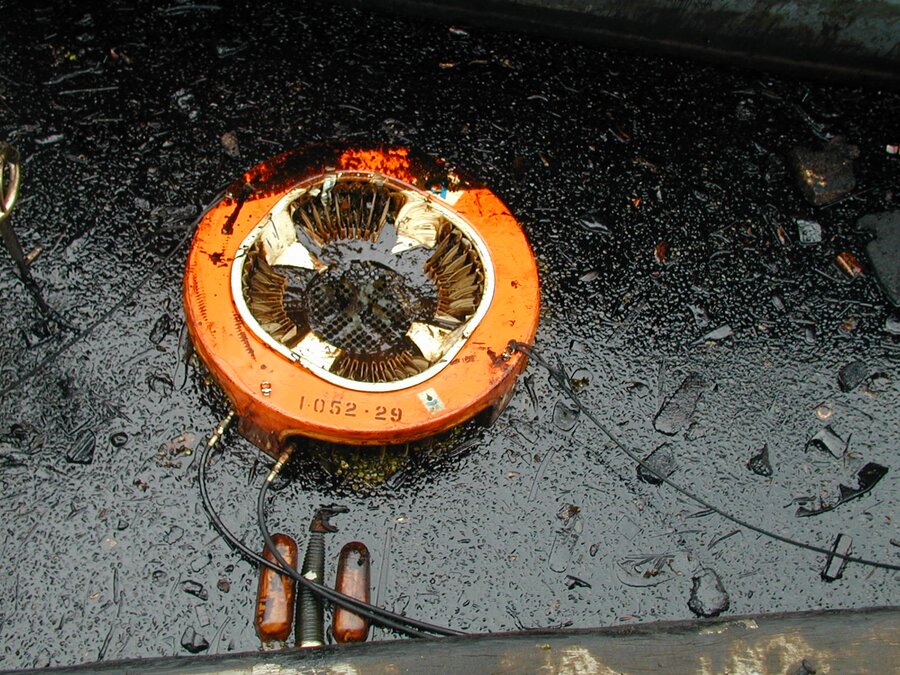
Skimmers function to remove oil from the water surface and incorporate an oil recovery element, a form of flotation or support and transfer device, eg pump, to transfer recovered oil and water to storage tanks.
The optimal skimmer design will depend on the viscosity of the oil to be recovered and the prevailing sea conditions. Because skimmers float on the water surface, they experience many of the same operational difficulties as booms, particularly those posed by wind, waves and currents. Even moderate wave motion greatly reduces the effectiveness of most skimmer designs.
The simplest skimmers are suction devices which remove oil from the water surface directly or via a weir. These designs tend to pick up a lot of water at the same time as the oil unless operating in very calm conditions. More complex units rely on the adhesion of oil to metal, plastic discs or oleophilic belts or ropes. Others employ brush systems or are designed to generate vortices to concentrate and recover the oil.
Read more
Once operating, skimmers can recover oil at a rapid rate and therefore it is important to have adequate temporary oil storage facilities available, otherwise lack of storage space may become a bottleneck to continued oil recovery. Temporary storage needs to be easy to handle and set up, and easy to empty once full so that it can be used repeatedly. Suitable units include barges and portable tanks which can be set up on vessels of opportunity.
Floating debris can compromise skimmer efficacy. Where debris is common, such as near urban areas or river mouths, skimmers may need 'trash screens' and regular unblocking. They will also need continuous maintenance by technicians and a supply of spare parts.
Once oil recovery is completed, skimmers will need to be cleaned, overhauled and repaired, ready for use in the next spill. It is also important to inspect and test equipment regularly so that it is in good working order, and to maintain personnel training standards by regular drills.
Given the practical challenges of operating and coordinating multiple vessels to handle long lengths of boom and skimmers at sea in less than ideal conditions or within confined waterways, specialised vessels have been built which incorporate sweeping/deflection arms (booms), skimming devices and on board oil storage. These vessels will still have operational limitations and their efficiency will mainly be determined by the inbuilt oil recovery system or skimmer which is deployed.
Explore Documents on Containment & Recovery
Containment & Recovery of Oil Spills at Sea. Methods and limitations (1995)
The ultimate aim of any oil recovery operation at sea is to collect as much floating oil as is reasonably and economically possible. However, a review of past spills shows that rarely is more than 10% of spilled oil recovered from the sea surface. Although many methods of mechanical containment and recovery exist, each has its own limitations which affect the overall success of a recovery operation.
Categories: Containment & Recovery, Papers
TIP 03: Use of booms in oil pollution response
This paper describes the principles of boom design and the two main modes of operation, namely towing by vessels at sea and mooring in shallow or inshore waters.
Categories: Response Techniques, Containment & Recovery, Planning & operations, Technical Information Paper (TIPS)
TIP 05: Use of skimmers in oil pollution response
This paper describes the fundamental requirements for the successful use of skimmers in the situations most likely to be encountered during an oil spill and should be read in conjunction with other ITOPF papers in this series, in particular, on the use of booms, shoreline clean-up techniques and the disposal of oil.
Categories: Response Techniques, Containment & Recovery, Planning & operations, Technical Information Paper (TIPS)

